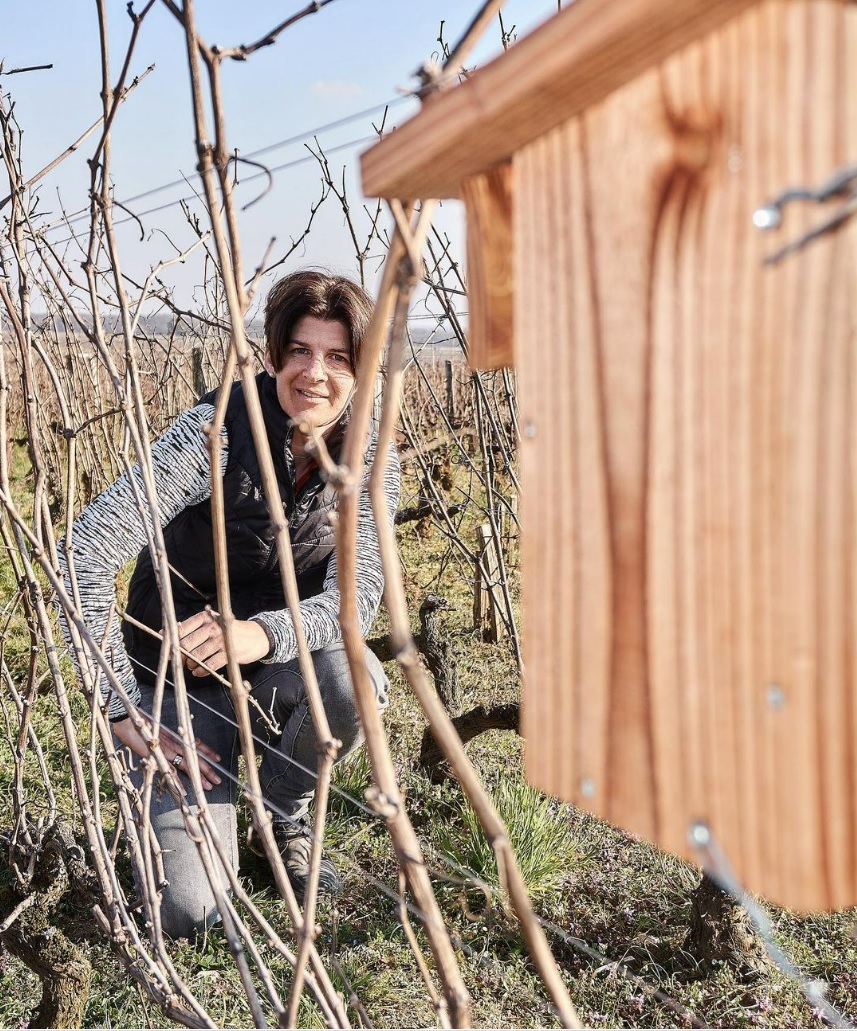THE FIRST BOOK THAT WINE PROFESSIONALS AND JOURNALISTS ALIKE REFER TO WHEN DISCUSSING BURGUNDY PRODUCERS IS REMINGTON NORMAN MW'S "THE GREAT DOMAINES OF BURGUNDY", PUBLISHED IN 2010. THE THIRD EDITION, PUBLISHED IN 2010, IS THE MOST RECENT, BUT CECILE TREMBLAY IS A RISING STAR IN BURGUNDY WHO IS NOW CONSIDERED ONE OF THE BEST PRODUCERS, EVEN THOUGH HE IS NOT LISTED IN THIS BOOK.
Great niece of Henri Jayet
Domaine Cécile Tremblay was established in 2003 when the family's fifty-fifty farming contract for a portion of their vineyard in the Côte de Nuits expired. Half-cropping is a lease unique to Burgundy in which the tenant farmer is paid a rent, usually half of the harvest, in the form of grapes or wine.
The vineyard originally belonged to the wife of Eduard Jayet, Cécile Tremblay's great-grandfather and Henri Jayet's uncle. Eduard was a barrel maker in Nuits-Saint-Georges before World War I. In 1921, he married Estelle Fournier, a winegrower by trade, and when she inherited the Fournier family estate, he began to make wine. From this point on, Eduardo and his wife expanded their vineyard holdings.
In 1950, the vineyard was divided among their five children, but the youngest daughter, Renée Jaillet, Cécile Tremblay's grandmother, kept the vineyard and rented it out to growers such as Domaine Michel Noëla under a series of half-cropping agreements. Her only daughter, Marie-Anique, who inherited the vineyard from René Jayer, expanded the vineyard holdings with her husband, while the vineyard remained leased to a half-cultivator until 2002. Marie Annick's daughter, Cécile Tremblay, was born and raised in the village of Vosne-Romanée, and in 2003, when her parents' half-cropping contract for 3 hectares of their 7-hectare vineyard came up for renewal, her two older brothers, neither of whom were winemakers, became uninterested. Neither his parents nor his grandparents were winegrowers, but neither of his two older brothers was interested, so Cécile decided to take over his parents' vineyards, and Domaine Cécile Tremblay was born in 2003.
Cultivation and Brewing
Current releases of Domaine Cecile Tremblay's representative wines include Chapelle Chambertin, Echezeaux du Douche, Vosne Romanée Les Beaumonts and Chambolle-Musigny Les Foullots, with Clos de Vougeot to be added in the future. The topsoil had darkened, lost its vital layer, and hardened due to the use of herbicides and other chemical pesticides by the previous tenant farmers. Immediately after taking over, Cecile began practicing organic farming methods, obtaining organic certification in 2005 and biodynamic certification in 2016.
Consultants are hired for viticulture and state-of-the-art techniques are used. For example, the vines are trained low, and weeding is done manually by shallow plowing instead of tilling or using herbicides, in order not to destroy the topsoil's clumping structure. In Burgundy, where sunburn has become a problem due to global warming, the leaf zones of the vines are wired to prevent them from lifting in plots where shade is needed. The winery was founded in 2012 in Morelly.
The winery was newly established in 2012 near our own vineyard, Tré Girard, in the village of Moret St. Denis. Unlike Henri Jayer, who destemmed 100% of his grapes, Cécile Tremblay is flexible in his destemming ratio, depending on the vintage and vineyard. While normally about one-third of the grapes are fermented whole-cluster, Chapelle Chambertin, planted in 1924, is 100% whole-cluster fermented, and the young wine shows blue stem-derived nuances similar to those found in Domaine Leroy and Domaine de la Romanée-Conti. With 25 to 30 years of bottle aging, these flavors give way to sensual notes reminiscent of star anise.
The oak barrels for aging are sourced from Stéphane Chassin, an independent company from Seguin Moreau, and the percentage of new oak is 0-70% depending on the wine. This also differs from Henri Jayer, which uses 100% new oak. The wines are made using a combination of gentle extraction with pigeage (punching down) and lumontage (pumping over), basket pressing, aging in oak barrels sur lie without omission until bottling, and bottling without fining or filtration. The vinification process requires careful monitoring on site.
The 2018 vintage uses fine-grained Sardinian corks instead of Andalusian corks. The corks are made of fine Sardinian corks instead of Andalusian corks.
Cécile Tremblay has been touted as being related to Henri Jayet, but the style of wine is different from Jayet's 100% destemmed wines. While Jaillet vinified pure, delicate wines, Cecile's are more complex, structured by rich tannins. It is rather Cecile's husband, Philippe Charlopin, who was actually under his tutelage, who should be associated with Henri Jayer.


